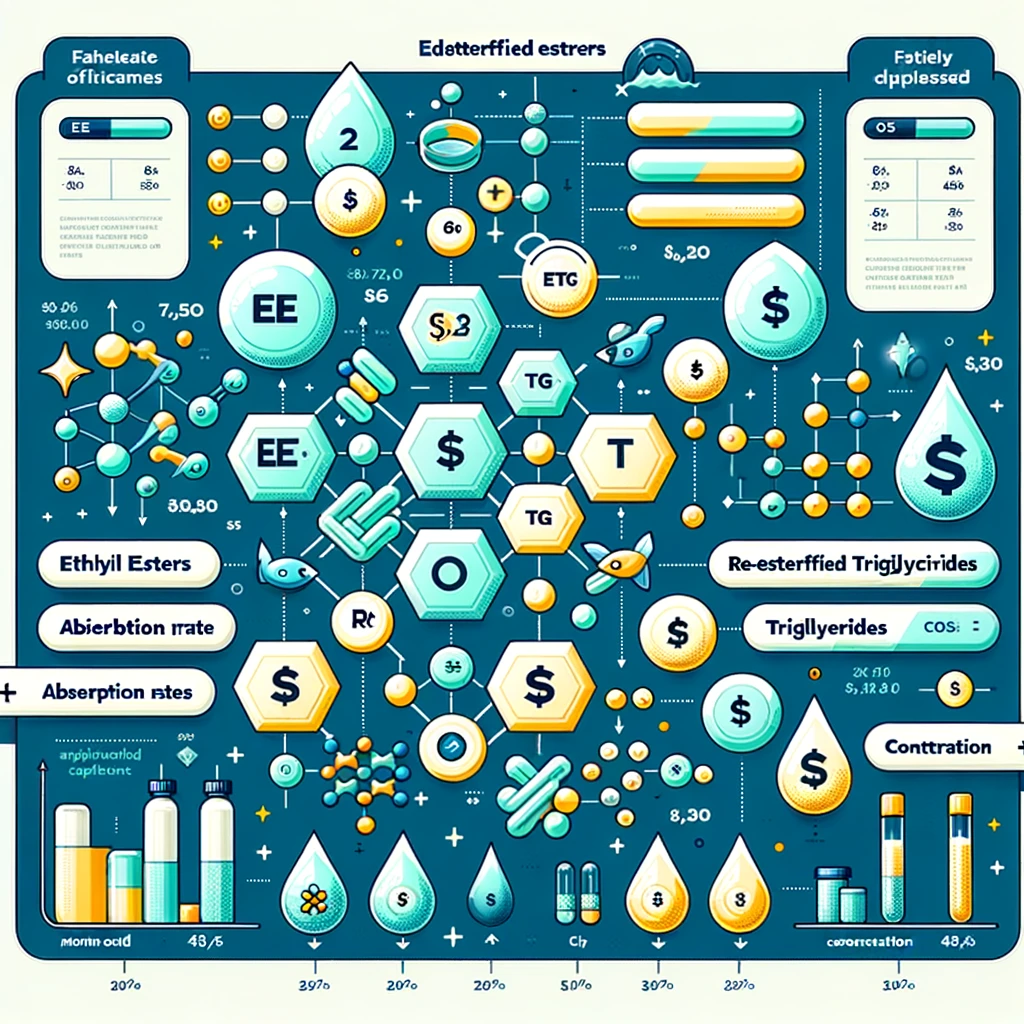
When selecting a fish oil or cod liver oil supplement, the form of omega-3 fatty acids—specifically, whether they are in ethyl esters (EE), re-esterified triglycerides (rTG), or triglycerides (TG)—plays a critical role in the product’s overall quality, absorption, and efficacy. This article delves into these three forms, comparing their impact on the quality of cod liver oil and fish oil supplements.
Ethyl Esters (EE)
Ethyl esters are a form of omega-3 fatty acids produced through molecular distillation, a process that concentrates and purifies the oil. While this form allows for higher levels of omega-3 concentration and removes contaminants effectively, it is not the natural form of fats found in fish oil. EE forms have a lower bioavailability compared to triglycerides, meaning they may be less effectively absorbed by the body. However, their production cost is lower, making EE-based supplements often more affordable.
Re-esterified Triglycerides (rTG)
Re-esterified triglycerides are produced by converting ethyl esters back into a triglyceride form, closely resembling the natural structure of fats in fish oil. This process enhances the bioavailability of omega-3 fatty acids, making them more similar to the triglycerides naturally found in food sources. rTG forms are considered superior in terms of absorption and efficacy compared to EE forms. However, the additional processing required to convert EE to rTG can make these supplements more expensive.
Triglycerides (TG)
Triglycerides are the natural form of fats found in fish oil and cod liver oil, consisting of three fatty acids attached to a glycerol backbone. This form is naturally occurring in dietary fats and is readily absorbed by the body. Supplements containing omega-3s in triglyceride form are considered high-quality due to their natural composition and excellent bioavailability. However, because they undergo less processing to concentrate omega-3 levels, they may contain lower amounts of EPA and DHA compared to EE and rTG forms.
Comparison in Quality
- Bioavailability: TG and rTG forms have higher bioavailability than EE, making them more efficient in delivering omega-3 fatty acids to the body. Higher bioavailability means better absorption and potentially more significant health benefits.
- Purity and Concentration: EE forms allow for higher omega-3 concentrations and can be more thoroughly purified of contaminants. However, this comes at the cost of natural structure and possibly lower absorption.
- Cost: Supplements in the EE form tend to be less expensive due to lower production costs. In contrast, rTG supplements, because of their additional processing steps, and TG supplements, due to their natural and less concentrated form, are typically more costly.
- Natural Composition: Many consumers and experts prefer the TG form for being closest to the omega-3 fatty acids found in natural food sources. This preference is based on the desire for a product that is as close to nature as possible, despite the lower concentration of omega-3s compared to EE and rTG forms.
Conclusion
The choice between EE, rTG, and TG forms of fish oil and cod liver oil depends on a balance of factors, including desired concentration of omega-3s, budget, and importance of natural composition and bioavailability. While rTG offers a middle ground with high bioavailability and relatively high omega-3 concentration, TG forms appeal to those prioritizing natural composition. Conversely, EE forms might be suitable for individuals seeking a more affordable option without a primary concern for the absorption rate. Understanding these differences can help consumers make informed decisions that align with their health goals and preferences.